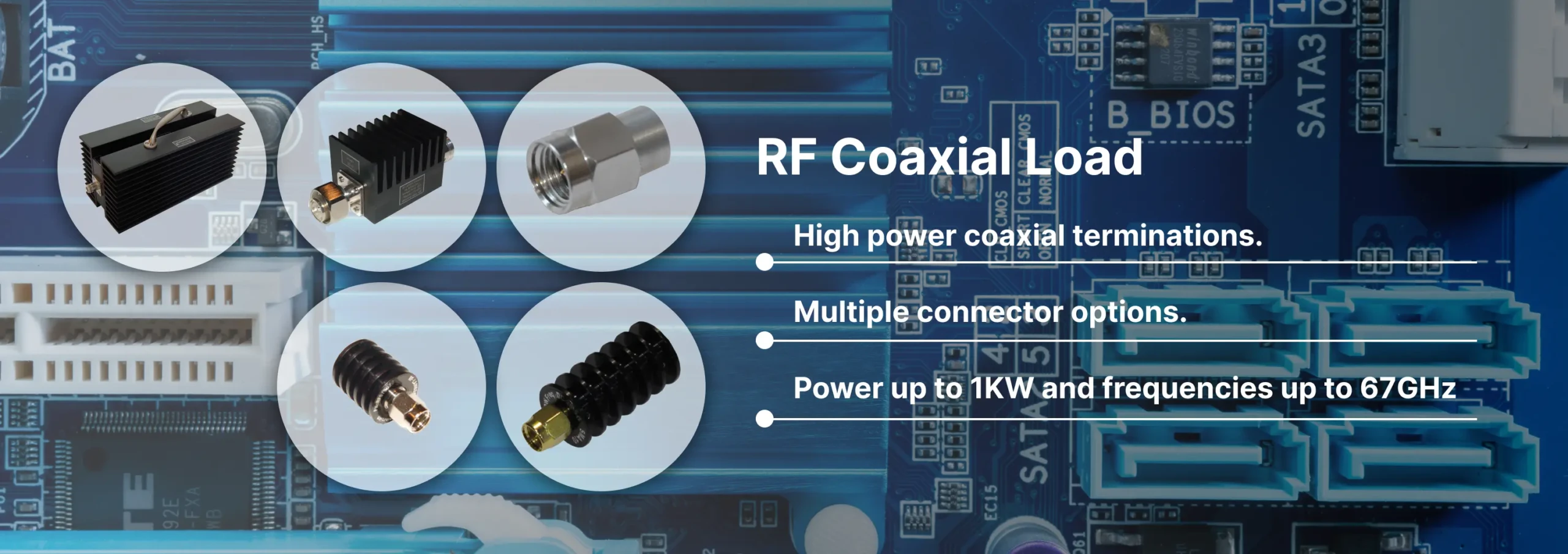by Angela
Share

In high-power RF and microwave systems, passive components play an essential role in signal routing, power splitting, attenuation, and impedance matching. These components are crucial for ensuring reliable, efficient, and stable performance across various industries, including telecommunications, defense, medical, and aerospace.
However, when working with high-power RF and microwave systems, engineers and designers must address several considerations and constraints that differ significantly from lower power systems. In this blog, we will explore the challenges associated with high-power RF and microwave passive devices and the key factors you should consider when selecting and implementing them in your design.
🔧 What Are High-Power RF and Microwave Passive Devices?
High-power RF and microwave passive devices are components that manage the flow of RF signals in systems operating at higher power levels (typically above 1 watt). These devices include:
-
Attenuators: Reduce signal strength without distortion.
-
Directional Couplers: Split or combine RF signals for testing or signal distribution.
-
Power Dividers/Combiners: Distribute or combine power across multiple paths.
-
Isolators and Circulators: Prevent unwanted reflections and protect sensitive equipment from high-power signals.
-
Filters: Block or pass specific frequency bands.
These devices are essential for controlling signal integrity, minimizing loss, and ensuring that signals are correctly distributed in a high-power system.
⚡ Key Considerations for High-Power RF and Microwave Passive Devices
When selecting or designing high-power passive components, there are several factors you must take into account to ensure they perform optimally and safely:
1. Power Handling Capacity
The most critical specification for high-power devices is their ability to handle power without failure. Exceeding the rated power capacity can cause:
-
Thermal breakdown: Components can overheat and degrade due to excessive heat generated by high power.
-
Device failure: In extreme cases, components like resistors and capacitors can burn out if they cannot dissipate the energy effectively.
Always ensure that the passive device you select has a power rating that exceeds the expected power in your system. Additionally, consider the peak power and average power ratings separately, as some devices can handle high peak power for short periods but may not withstand sustained high-power operation.
2. Impedance Matching and Reflection Loss
Proper impedance matching is crucial in high-power systems to ensure maximum power transfer and minimize signal reflections. Impedance mismatch can cause:
-
Signal degradation: Reflections lead to signal loss, which can reduce the performance of the system.
-
Voltage standing wave ratio (VSWR): Poor impedance matching results in high VSWR, which can damage equipment and reduce overall efficiency.
Ensure that passive components maintain consistent impedance throughout the system to ensure stable performance and minimize reflections.
3. Thermal Management
High-power RF systems generate significant amounts of heat. Proper thermal management is crucial to prevent components from overheating and failing. Some common methods to address this challenge include:
-
Heat sinks: Attach heat sinks to the passive components to dissipate heat effectively.
-
Air or liquid cooling: For high-power systems, advanced cooling methods like forced air or liquid cooling may be necessary.
-
Material selection: Materials with high thermal conductivity, such as copper or aluminum, are often used for heat dissipation.
Designing for effective thermal management ensures that your passive components remain within their operational temperature range, improving their longevity and performance.
4. Frequency Range and Bandwidth
High-power RF systems often operate across a broad range of frequencies, and it’s important that passive components can function effectively across the required frequency bands. Poor performance outside of a component’s specified frequency range can lead to:
-
Increased losses: Components may become inefficient at frequencies outside their specified bandwidth.
-
Signal distortion: Signals may become distorted if the device doesn’t provide a smooth passband.
Ensure that the passive components you select are rated for the frequency range that matches your system’s requirements.
5. Environmental Conditions
High-power RF devices must perform reliably under challenging environmental conditions, especially in military, aerospace, and outdoor applications. Factors to consider include:
-
Temperature extremes: High-power components must operate reliably in both high and low temperatures.
-
Vibration resistance: In aerospace and defense applications, components must be able to withstand mechanical stress and vibration.
-
Corrosion resistance: Components exposed to moisture or corrosive environments must be resistant to rust and corrosion.
Choose components with environmental protection ratings such as IP67 (dust-tight and waterproof) or MIL-STD (military standard) for robust performance in harsh conditions.
🛠️ Challenges in Designing High-Power Passive Devices
Designing high-power RF and microwave passive components comes with its own set of challenges. Some of the key obstacles include:
-
Size and weight: High-power devices are often larger and heavier due to the need for better cooling and higher power handling.
-
Material constraints: The materials used must balance thermal conductivity, electrical conductivity, and durability, which can be difficult to achieve.
-
Cost: High-power components require higher-quality materials and precision engineering, which can drive up costs.
Working with experienced engineers and manufacturers can help overcome these challenges and ensure that the passive devices are tailored to your specific system requirements.
🌟 Product Recommendation: High-Power RF Components from Reach-Line
At Reach-Line, we specialize in providing high-performance RF and microwave passive devices for a wide range of applications. Our components are designed to handle high-power levels efficiently while maintaining signal integrity and reliability.
🔗 Explore our high-power RF and microwave products
📌 Conclusion
High-power RF and microwave systems demand passive components that can handle the stresses of high power, temperature fluctuations, and rigorous operational conditions. By considering key factors such as power handling, impedance matching, thermal management, and environmental conditions, you can ensure that your components perform optimally and reliably.
If you’re working with high-power RF systems, our experts at Reach-Line can help you select the best passive devices for your needs. Contact us today to discuss your project.
📝 Call to Action
Looking for high-performance passive components? Visit our website for more information and to browse our extensive catalog of high-power RF products.
STAY IN FOR MORE NEWS
Subscribe to our free newsletter.
Discover Reach-Line’s precision RF and microwave terminations covering DC to 110 GHz and power levels 1 W to 1000 W. Reliable, low VSWR solutions for 5G, satellite, and lab applications.
Reach-Line offers high-frequency cable assemblies, fixed attenuators, and precision terminations. Partner for engineering support, rapid prototyping, and global logistics.
In the realm of high-frequency applications, the SMA (SubMiniature version A) connector stands out as a compact yet powerful component. Developed in the 1960s, SMA connectors are designed for applications up to 18 GHz, with some precision versions extending to 26.5 GHz.
Reach-Line fixed attenuators cover DC to 110 GHz and 1 W to 1000 W. Fine-tune signals, protect components, and ensure repeatable tests in demanding RF applications.





